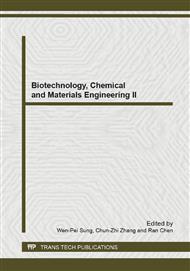p.615
p.619
p.625
p.630
p.638
p.645
p.654
p.666
p.675
Bioinformatics Analysis and Characteristics of UL17 Protein Encoded by the UL17 Gene from Duck Enteritis Virus
Abstract:
Previous studies indicate that the UL17 protein and its homology play similar roles in viral DNA cleavage and packaging of herpesviruses. However, there is no report on the UL17 gene product of DEV. Here in this article we used various bioinformatics softwares and online web servers to analyze the basic properties of the DEV UL17 protein. The results showed that the DEV UL17 protein was 75.94298 kDa, consisting of 684 amino acids. It had multiple motif sites, phosphorylation sites and antigenic epitopes. There were no predicted signal peptide sites or transmembrane regions in DEV UL17 protein. The results of secondary structure and teriary structure were exhibited in the pictures in this article. These properties of the DEV UL17 protein provide a prerequisite for further functional analysis of this gene.
Info:
Periodical:
Pages:
638-644
Citation:
Online since:
January 2013
Authors:
Keywords:
Price:
Сopyright:
© 2013 Trans Tech Publications Ltd. All Rights Reserved
Share:
Citation:


